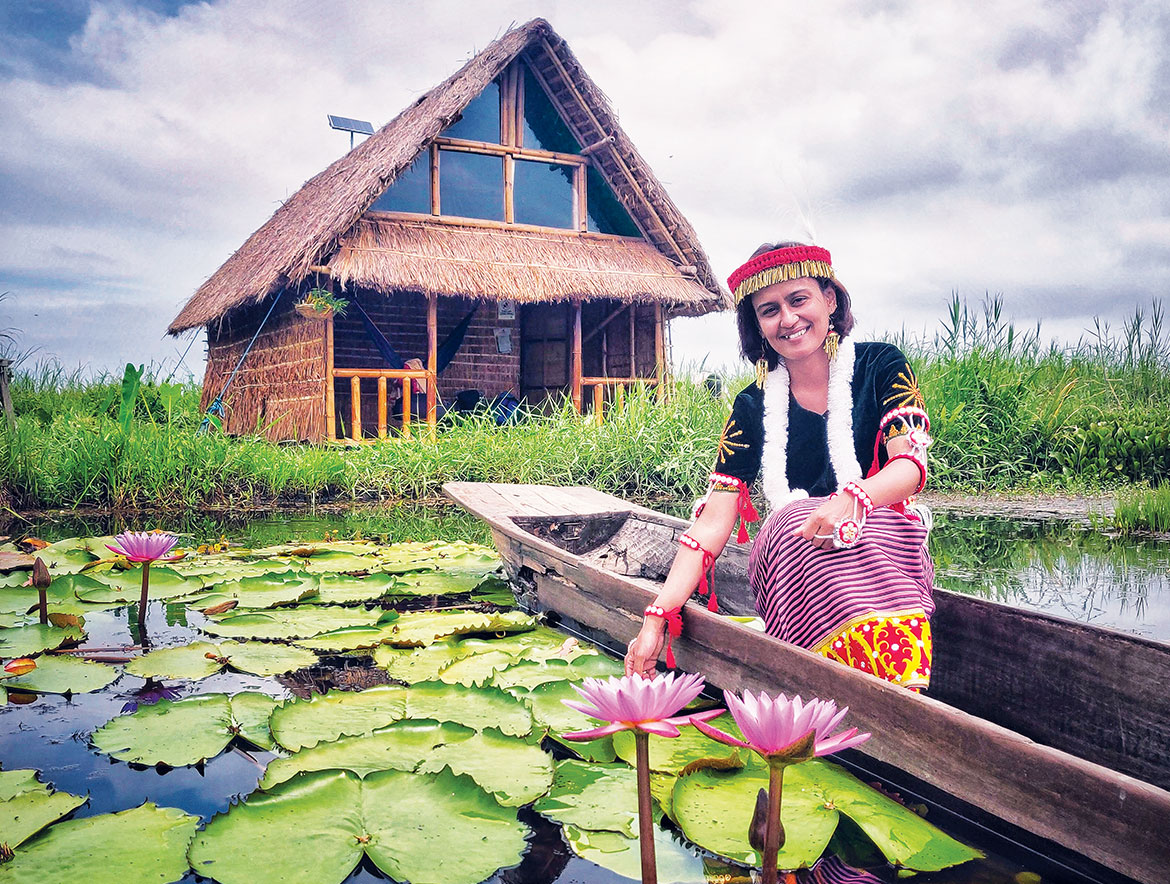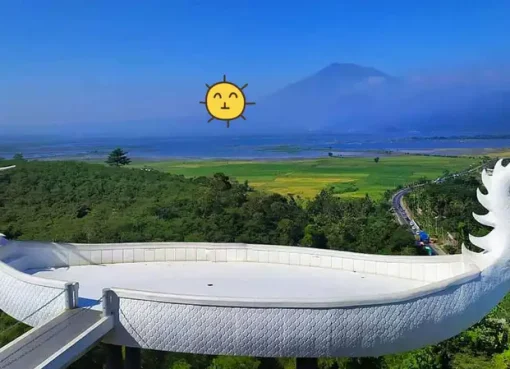Loktak Lake: Discover the Beauty, Biodiversity, and Cultural Significance

Say good morning to Loktak Lake, the biggest of all the lochs of Manipur, which also makes it one among the most important lakes of the region. Loktak Lake is the largest freshwater lake in this part of the world extending over an area of 300 square kilo meters delighting visitors as they appreciate the captivating natural beauty and biodiversity. This lake has a magic quality, in which you will find floating vegetation islands called “phumdis” to make this attraction even more enchanting.

There is more to Loktak Lake
This strategically located Loktak Lake in the Bishnupur district f Manipur is nothing less than a breathing space to escape the urban lifestyle. Nestled in the midst of vibrant green hills and valleys, the lake provides a serene haven to convening nature lovers. The glassy clear water of Loktaka Lake is perhaps the most standout experience to offer with green hills and different plantations; the tranquil scene appears just like a painting all you need to do, is keep gazing at it or else click a shot to preserve it.
This exemplary peaceful setting of Loktak Lake reflects an amazing amalgamation of different ecology – the phumdis, the thick verdant patch covering a wide range of land areas, fish and aviary animal personalities. For local communities, the lake is a valuable lifeline offering resources and extensive flora and fauna. You also get enchanted by the surreal beauty of Loktak Lake and for all the peace it should bring to you.
Importance of Loktak Lake
Loktak Lake has great cultural, ecological and economic value for the people of Manipur. The lake provides much needed resources for many local communities, which use it for fish cultivation and agriculture. Loktak lake also offers sought after ecological balance in the region, the lake is the habitat of many endanger species including migratory birds and fauna.
Loktak Lake: Floating phumdis act as carbon sinks, correlated to climate endeavours and prevailing environment collaterals The Floating phumdis of hometogel login Loktak Lake do not only form a unique ecosystem with various species of flora and fauna but also act as natural carbon sinks thereby helping in offsetting carbon footprints and mitigations at the behest of climate change. Moreover, the lake has cultural significance for the native population, which reveres the lake as somewhat mystical and sacred based on traditional practices. The lake symbolizes the holistic bonding between man and nature prevailing in the state but at the same time it alerts the recent destruction continuing due to in sustainable management of the lake.
Biodiversity of Loktak Lake
In the heart of this magical nature reserve, is the captivating world of biodiversity in Loktak Lake where life blossoms on every nook and corner. The presence of the significant number of plant species like rare orchids and aquatic plants, that grow on the floating phumdis of Loktak Lake make it viable and advantageous to conserve this unique habitat of rarities. Locally, crippled beings started wriggling their legs, there has been a significant array of animal species living in these floating bio-masses such as colourful butterflies dancing in their tiny stomachs and clumsy elusive otters flippering in their stomach which never stops subdividing as if it was a cloud computing grid.
Embark on a journey to the Keibul Lamjao National Park, situated on the southern bank of Loktak Lake and witness the unique Sangai, or the Brow-antlered deer, the pride of Manipur, which also happens to be the state animal of Manipur. Highly endangered, the species takes safe haven in the marshy grasslands of the park, thereby contributing to the ecological diversity of the region. Beautiful lawn around the lake, you must be amazed at how lush everything grows in such a natural paradise.
Threats to Loktak Lake
Loktak lake, as one can say by now, is an important submergence, ecological and cultural phenomenon but it is vulnerable to a lot of peril that constantly displays at its doorsteps. The water quality of the lake is severely threatened by pollution from agricultural runoff, sewage discharge, and solid waste that enter the water from surrounding areas, seriously deteriorating the habitats of the plants and animals that rely on its resources. The spread of invasive plant species on the phumdis complicates the ecological problems of Loktak Lake even more.
The lake has seen overfishing for years and additional man-made threats to its fragile ecosystem, which has increased pressure on the biodiversity of the region. Climate change further endangers the health of Loktak Lake as a whole, as temperatures continue to rise and weather patterns become more unpredictable. Immediate action is required to mitigate these risks and ensure the continuation of this vital habitat over the long run.

Preservation of Loktak Lake
As those threats have grown ever more foreboding, there is a spate of conservation measures underway to secure its ecological and cultural legacy – efforts by local communities, state and federal government, and international organizations. The Loktak Lake Development Authority, LLDA, is at the forefront of the implementation of conservation projects aimed at bringing the Lake back to health and introducing sustainable practices. Derough plans to remove invasive plant species growing in the phumdis, which can help restore the native flora.
These initiatives to save Loktak Lake operated by the state and central governments are now more community-oriented and bring the local stakeholders in protecting Loktak Lake giving them a feeling of ownership and responsibilities to preserve their local wetland. This can include public education on work conducted to ensure that the habitat of the lake AASEA and its water quality are preserved, as well public awareness campaigns on topics like marine biodiversity, etc. In a world of cooperation and creative remedies, Loktak Lake is on the mend, The Loud Table is almost out of stock, and a new/twice-removed Mukherjee-Rao is likely learning to swim on the shores.
Things to do in and around Loktak Lake
So,what are you waiting for pack your bags and start a journey of discovery at Loktak Lake with myriads of activities and attractions to serve the Adventurist inside us. Take a peaceful boat ride on the serene waters of the lake while admiring the lush green hills and the panoramic beauty of the region. There are a lot of varieties of flora and fauna available in the lake, but if you are love Birds especially you can you can the migratory birds that visit the lynx andro blocked lake during the winter.
Manipur nature and wildlife
In south-eastern state of Manipur, Keibul Lamjao National Park is considered as a true naturalist’s paradise where the endangered Brow Antlered Deer which is commonly known as Sangai in the local dialect can be sighted in the wild, undoubtedly a moment which would leave you mesmerized. You could trek along the lovely trails that circumnavigate the Loktak Lake and indulge in the hidden treasures the trail takes you to and let yourself drown in the rampant flora and fauna that co-exists here. No matter whether you are an adrenaline junkie or a peace seeker, the place will make sure you won’t forget your visit for years to come!
How to Reach Loktak Lake
Imphal, the capital city of Manipur, is well connected from major cities in India by air, rail and road and Loktak Lake is easily accessible from here. How to reach – Imphal International Airport and a beautiful drive to Loktak Lake from airport, for a breathtaking pictures of landscapes along the way. Locals from Imphal also offer bus and taxi services to transport travelers from Imphal to Loktak Lake which is a preferred place for people who like nature and adventure.

When is the Best Time to Visit Loktak Lake
The Winter season (November – February) is the best time to visit Loktak lake since the weather is wonderful in winters and perfect for an outdoor trip. The little if any cloud and the cool temperatures made for perfect days to explore the natural beauty of the lake and enjoy a bunch of activities. How not to do it: Monsoon period (June-September) Rainfall might be a handicap and limited outdoor activities.
Conclusion
Conclusively, Loktak Lake in Manipur will stand asproved that nature has a resplendent beauty and human-nature interaction is complex and intrinsic. Loktak Lake, with phumdis floating on its surface and the rich wildlife it cradles along its shores, is a biodiversity hotspot and a cultural heritage site -living museum. As we face the hurdles in conservation and sustainable development, let us fight to save and maintain Loktak Lake for our future generations to love and appreciate. If you like reading this article then please consider reading our article about Seo Kang-joon.



